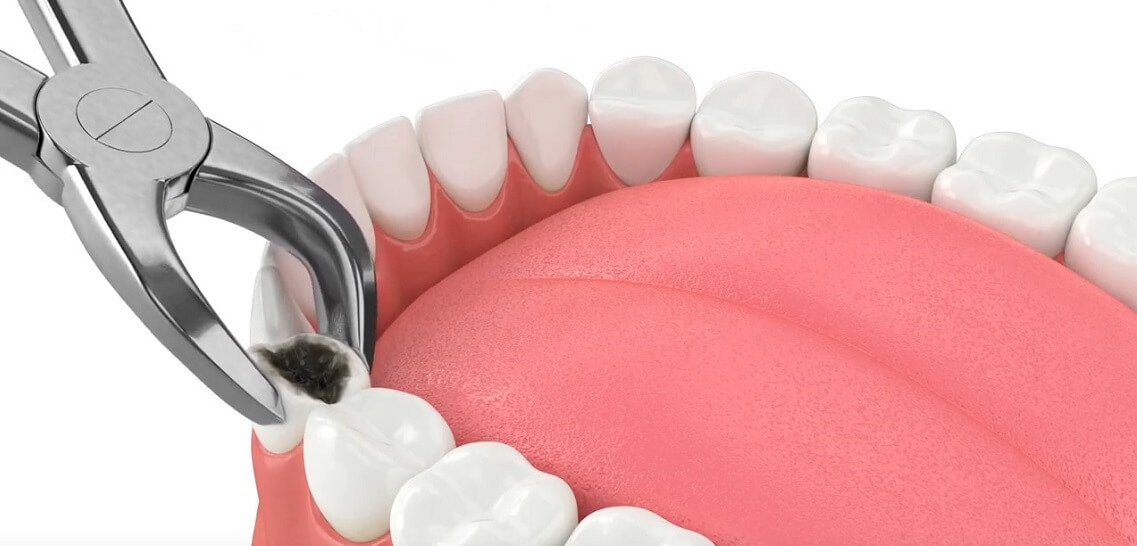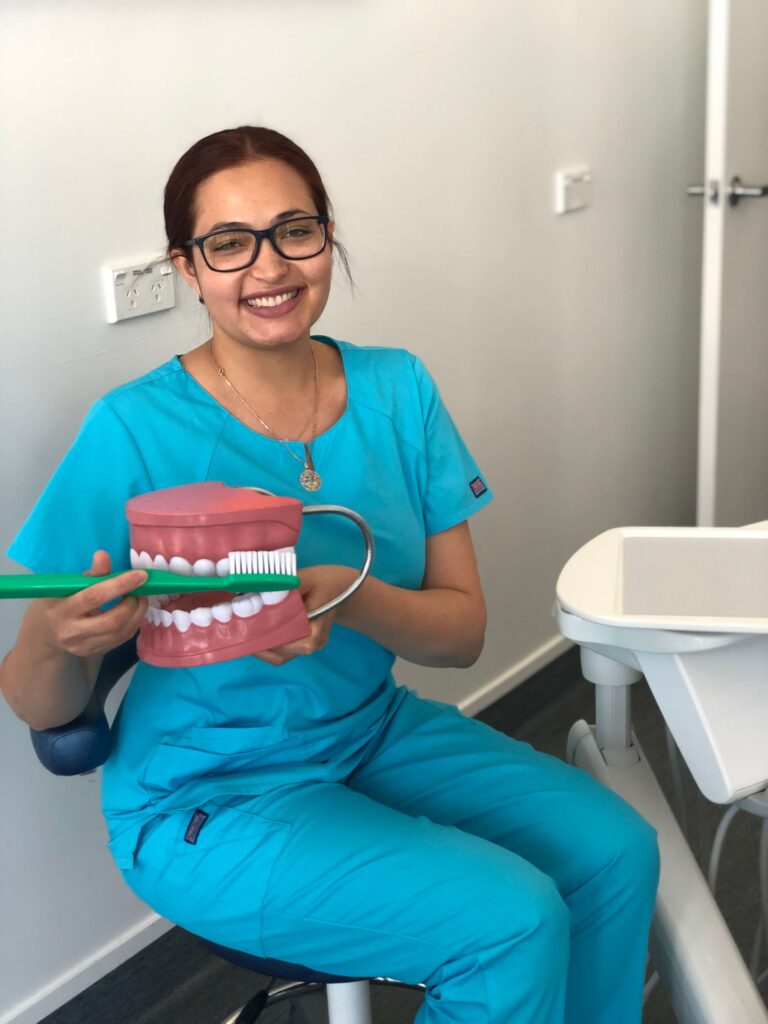Extraction of teeth in Auckland
 Modern dentistry has many ways to keep a patient's tooth. However, with advanced forms of diseases, with the destruction of the tooth or tissues around it, the appearance of mobility, and therapeutic treatment, which did not give positive results, the tooth, unfortunately, has to be removed. Tooth extraction is an extreme measure, until this moment the specialists of our clinics will do everything possible to keep the tooth alive for as long as possible. The operation is performed by a surgeon in an ordinary dental office.
Today, tooth extraction is an ordinary surgery, which is carried out in the clinic under local anesthesia, which means it is mostly painless. For complex tooth extraction at Marina Dentists, modern laser equipment is used, which helps to carry out the operation in a less traumatic way. As a result, the patient's rehabilitation takes less time and is easier.
Modern dentistry has many ways to keep a patient's tooth. However, with advanced forms of diseases, with the destruction of the tooth or tissues around it, the appearance of mobility, and therapeutic treatment, which did not give positive results, the tooth, unfortunately, has to be removed. Tooth extraction is an extreme measure, until this moment the specialists of our clinics will do everything possible to keep the tooth alive for as long as possible. The operation is performed by a surgeon in an ordinary dental office.
Today, tooth extraction is an ordinary surgery, which is carried out in the clinic under local anesthesia, which means it is mostly painless. For complex tooth extraction at Marina Dentists, modern laser equipment is used, which helps to carry out the operation in a less traumatic way. As a result, the patient's rehabilitation takes less time and is easier.
Indications
- advanced stage of pulpitis, periodontitis,
- tooth mobility caused by periodontitis,
- dislocation or fracture of a tooth - exposure of the dental nerve and root damage,
- difficult to erupt "wisdom teeth",
- impacted and dystopic teeth that grow inside the bone tissue and do not appear above the gum,
- orthodontic treatment - if some of the teeth interfere with the displacement of the rest,
- the formation of large cysts and granulomas,
- preparation for prosthetics and implantation.
Contraindications
- pregnancy - 1st and 3rd trimesters,
- lactation period (for acute indications),
- impossibility of anesthesia,
- period of menstruation in women,
- the use of drugs that reduce blood clotting and that induce excessive bleeding,
- general diseases of the body in the acute form: heart attack, infectious diseases, problems of the cardiovascular system, poorly controlled diabetes mellitus.
Types of Surgery
Simple Extraction
The dentist has easy access to the crown and root of the tooth - they are visible to the dentist, and they can be easily grasped with forceps for extraction. This operation can take only 10-15 minutes.Complex Extraction
It concerns the extraction of multi-rooted and impacted teeth located inside the bone tissue (as a rule, "wisdom teeth"). This is a more serious operation that often requires cutting through the gum tissue and even cutting the jawbone to provide access to the tooth.How does a tooth get extracted?
To remove teeth, special forceps with flat "beaks" are used to grip the tooth. Forceps grosp around the crown, and move under the gum, the tooth swings and is removed from the hole. If the tooth is multi-rooted, it may be cut into several parts and each root is extracted separately. This makes the operation easier, less traumatic for the tissues, and provides a better result. Marina Dentists' experts recommend getting a tooth extracted in the morning time: firstly, you are not tired yet, therefore, it will be easier to get through a stressful situation. Secondly, during the day you may experience the maximum peak of discomfort, which means that at night you will sleep better. Thirdly, if you have any problems or questions, you will be able to see a doctor before the end of the day, and not look for round-the-clock dental offices at night.Stages of the operation

- diagnosis: allows you to determine how the roots of the teeth are located - X-ray is used,
- anesthesia: even complex tooth extraction is carried out under local anesthesia - a certain amount of anesthetic is injected into the gum, the effect of which is about 1.5-2 hours. If necessary, the injection site is additionally anesthetized by applying an anesthetic gel,
- gasping the forceps to the tooth, rocking and twisting out of the hole (with a surgical approach, the gums and bone tissue are additionally cut),
- cleaning the hole, suturing if necessary, and fixing a dressing. Medicine may be prescribed.
Normal Consequences and complications after an operation
Any tooth extraction - both simple and complex - may be accompanied by tissue trauma. Therefore, every person has normal postoperative consequences that do not require any action. They pass on their own for a maximum of a week. There are also complications that require immediate referral to a specialist (dry socket, various inflammatory processes, purulent formations).Normal consequences after the surgery:
- soreness for 1-2 hours, maximum - a day after the operation,
- spotting that lasts 2-3 hours,
- the formation of white plaque, a tissue that promotes cell regeneration,
- pronounced swelling of the gums and face from the side of the manipulation,
- blue gums - hematoma formation,
- an increase in body temperature up to 38 degrees on the first day,
- soreness when opening the mouth,
- general weakness
Recommendations before and after surgery
 Before the operation, you need to eat well, if you are very anxious, an hour before the procedure, you can take medicine. When carrying out complex tooth extraction, the patient will first be prescribed anti-inflammatory and analgesic drugs, and, if indicated, antibiotics.
After surgery, the recommendations are as follows:
Before the operation, you need to eat well, if you are very anxious, an hour before the procedure, you can take medicine. When carrying out complex tooth extraction, the patient will first be prescribed anti-inflammatory and analgesic drugs, and, if indicated, antibiotics.
After surgery, the recommendations are as follows:
- change your lifestyle: do not smoke for at least 48 hrs, give up physical activities for 1-2 days, do not swim in pools, do not go to saunas, and do not fly on an airplane on the day the operation was performed,
- do not eat food and drinks that can cause pain: hot, or spicy. Only cold or warm foods and drinks during the first 2-3 hours after surgery,
- carry out therapeutic procedures: external compresses from the side of the cheek (only cold), taking medications prescribed by the dentist. After a few days - rinsing the oral cavity with antibacterial and disinfecting agents (only as prescribed by the dentist - active rinsing can damage the blood clot),
- softness and caution in caring for the oral cavity: on the first day after the operation, you should not even rinse your mouth. Next, the teeth can be cleaned without touching the socket formed after the operation.
How to restore a tooth after removal
Loss of teeth is the most common cause of bone atrophy. Due to the absence of a dental root and chewing load, the nutritional processes of cells slow down and, as a result, tissue loss occurs. According to research by scientists, atrophy after tooth loss occurs in 95% of cases, and 25% is lost in the first year after extraction. It is necessary to attend to the issue of restoring the extracted tooth as soon as possible. The patient can be offered options of various prices and complexity:- implantation of artificial bone and installation of a membrane - this method will prevent tissue loss, after which it will be possible to install an implant,
- installation of a bridge - it is attached to two supporting living teeth, and the middle crown fills the gap in the row,
- removable denture with hooks that cling to adjacent living teeth,
- implantation, which can be carried out simultaneously with removal. However, this approach is possible only in some cases.
